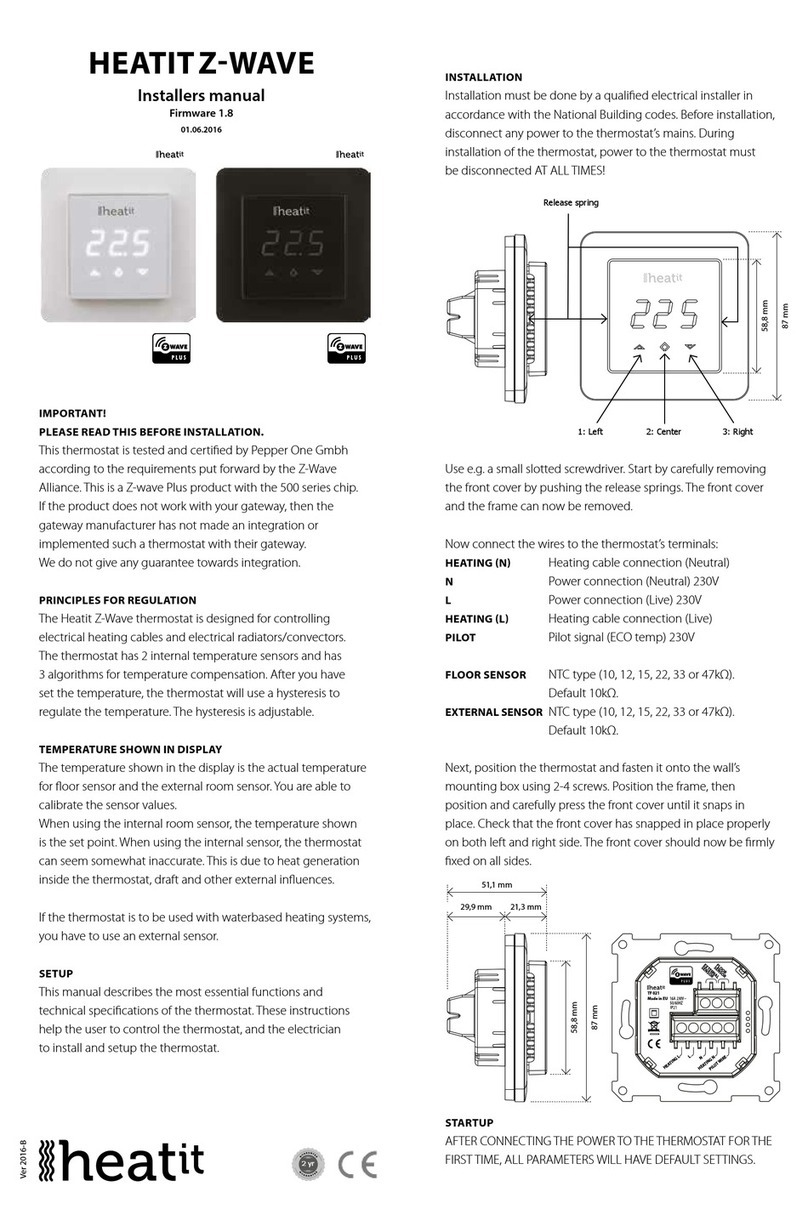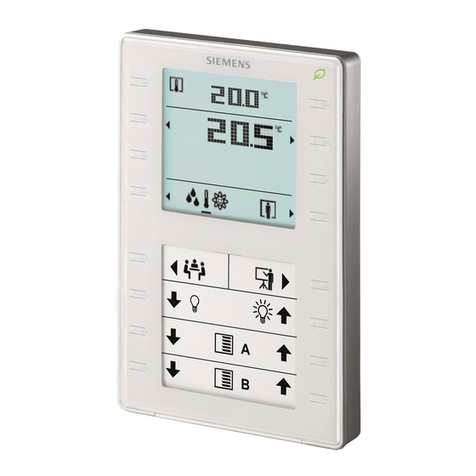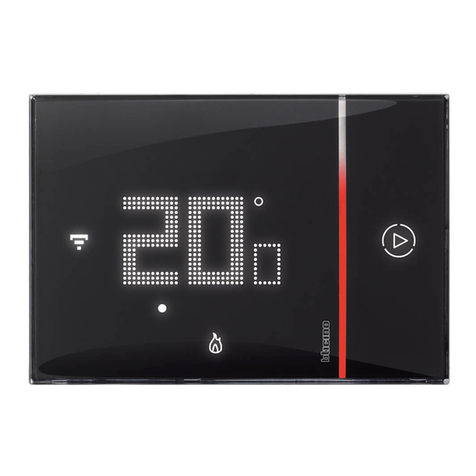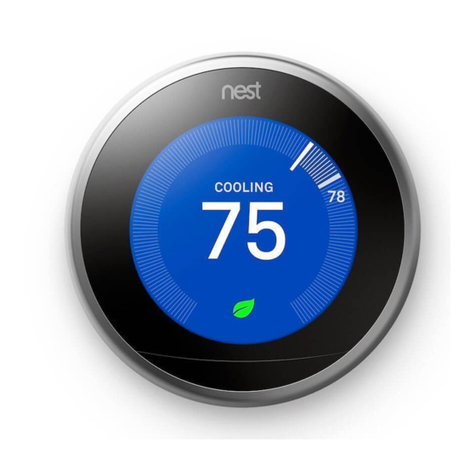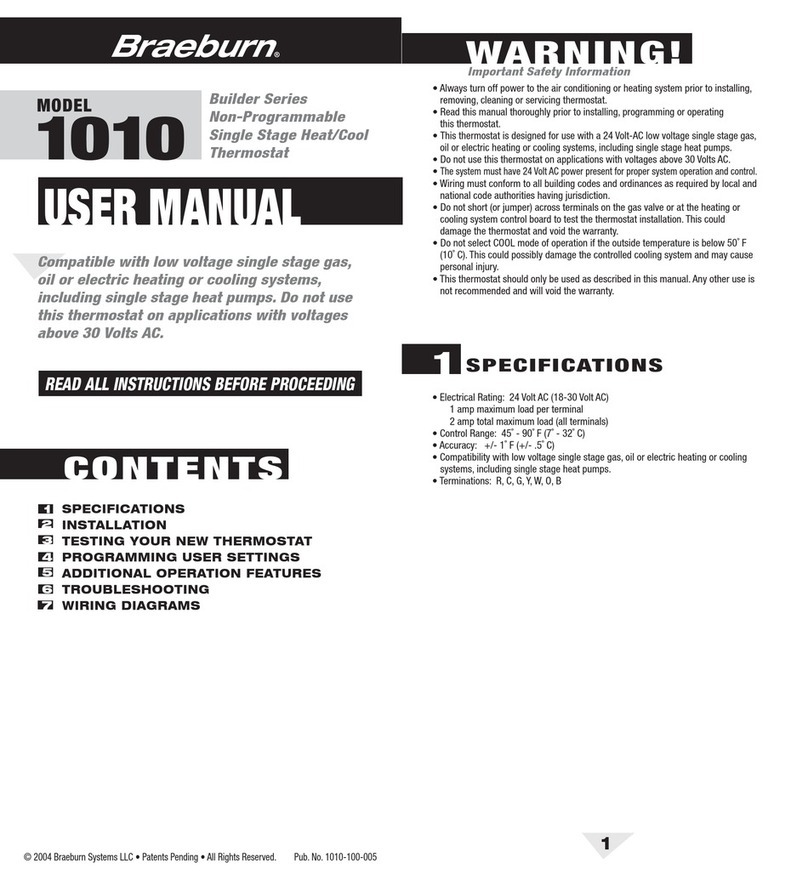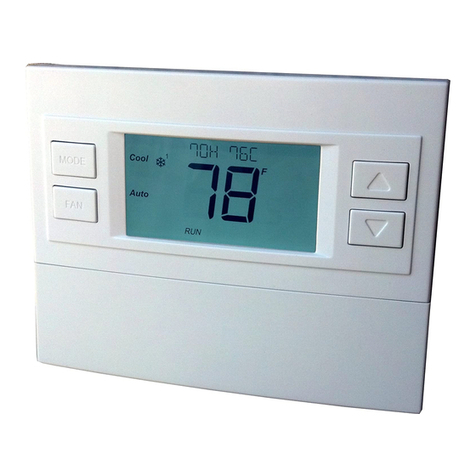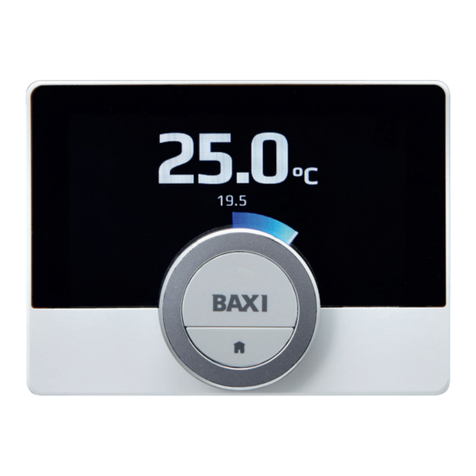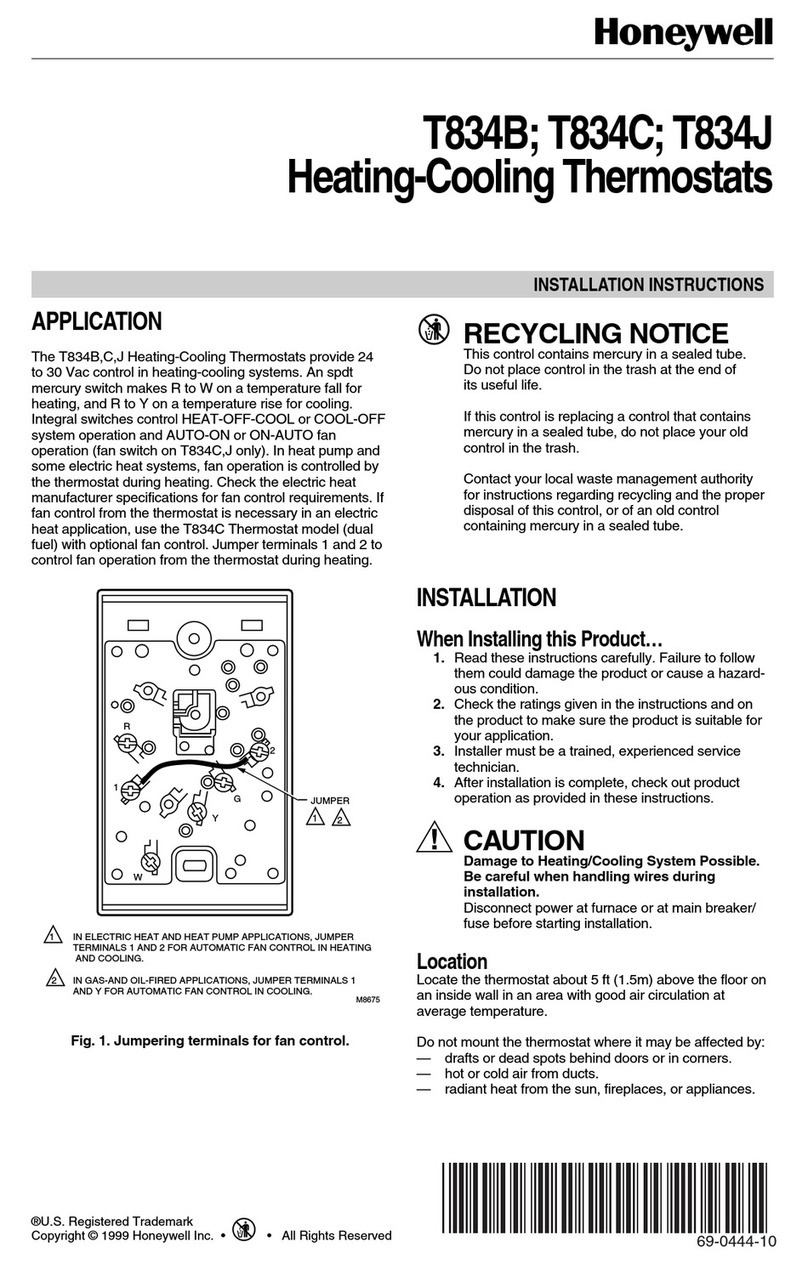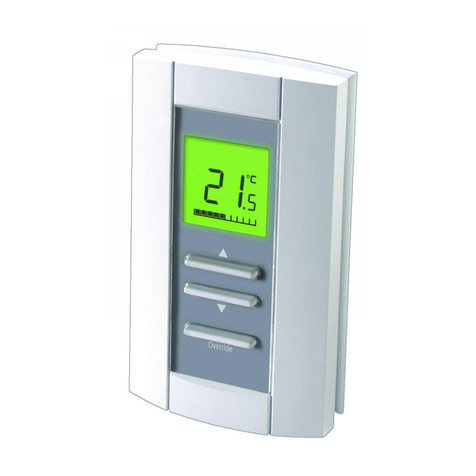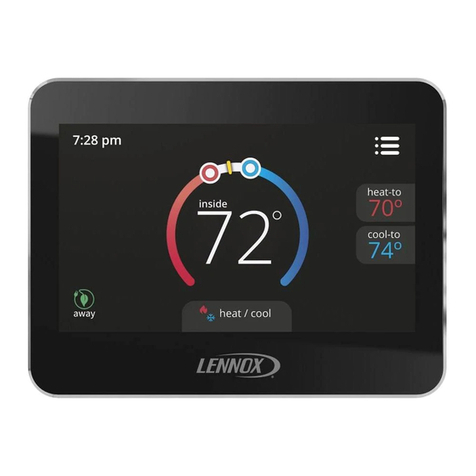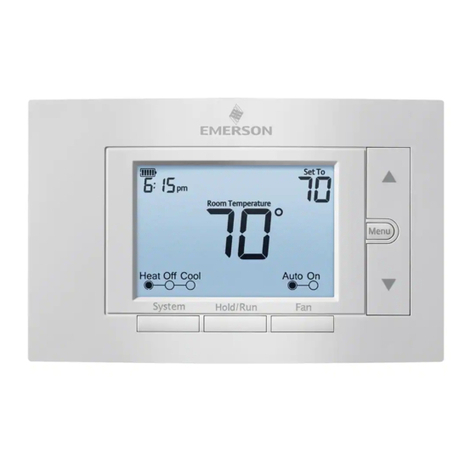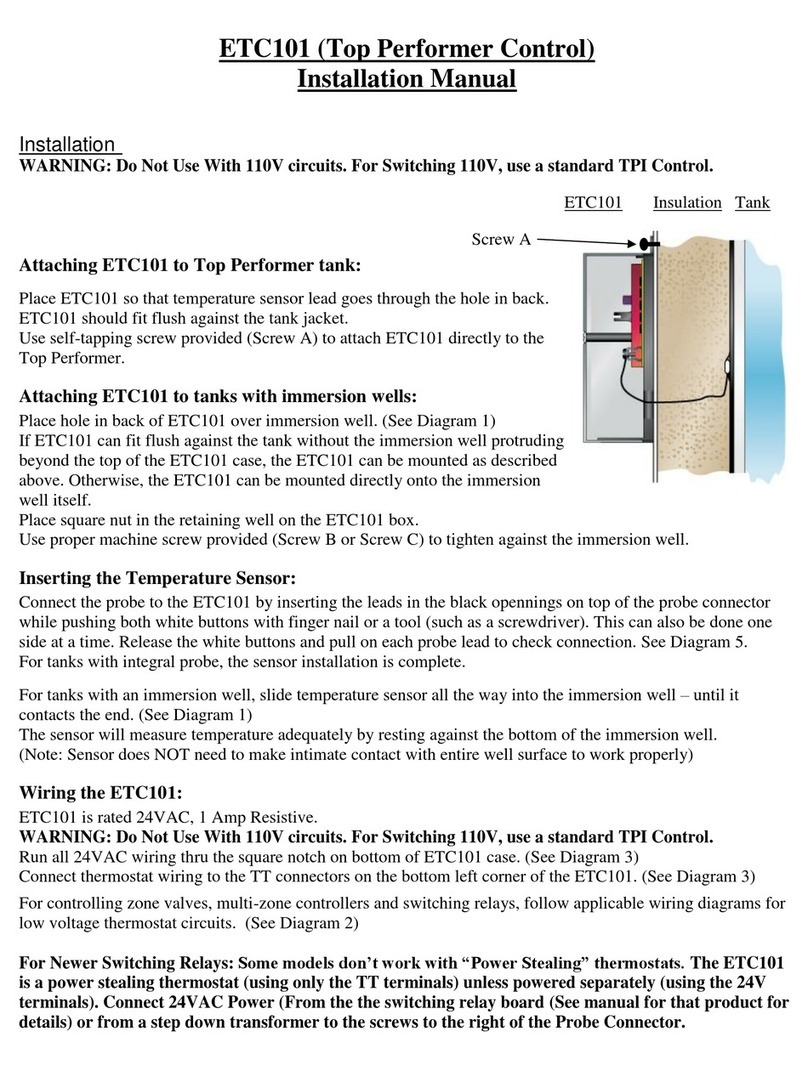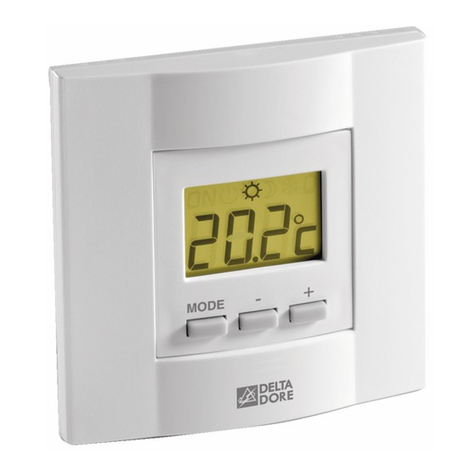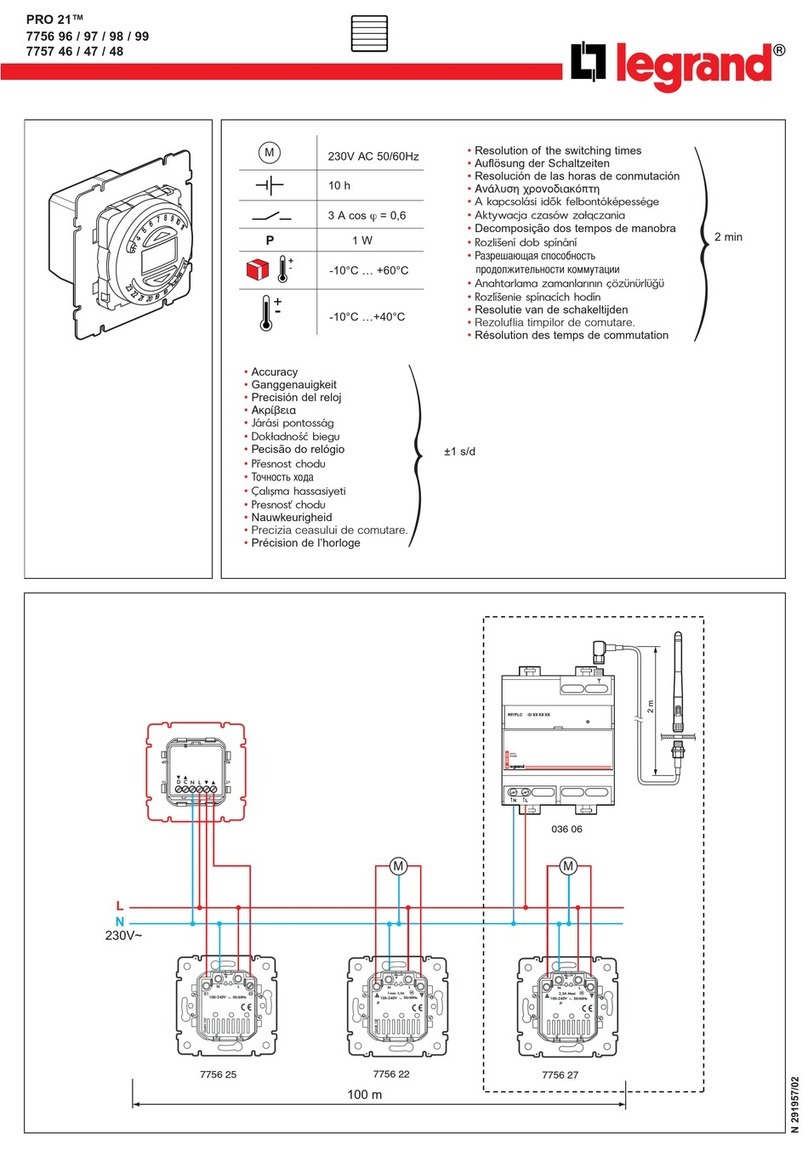Heatit Z-WAVE User guide

Ver 2019-A
IMPORTANT
PLEASE READ THIS BEFORE INSTALLATION
This thermostat is tested and certified by Pepper One Gmbh
according to the requirements put forward by the Z-Wave
Alliance. This is a Z-wave Plus product with the 500 series chip.
If the product does not work with your gateway, then the
gateway manufacturer has not made an integration or
implemented such a thermostat with their gateway. We do not
give any guarantee towards integration.
PRINCIPLES FOR REGULATION
The Heatit Z-Wave is designed for controlling electrical heating
cables and electrical radiators/convectors. The thermostat
has built in temperature sensors and has 3 algorithms for
temperature compensation.
After you have set the temperature, the thermostat will use
a hysteresis to regulate the temperature. The hysteresis is
adjustable.
TEMPERATURE SHOWN IN DISPLAY
The temperature shown in the display is the actual temperature
for floor sensor and the external room sensor. You are able to
calibrate the sensor values.
When using the built in room sensor, the temperature shown
is the set point. When using the built in sensor, the thermostat
can seem somewhat inaccurate. This is due to heat generation
inside the thermostat, draft and other external influences.
If the thermostat is to be used with waterbased heating systems,
you have to use an external sensor.
Z-WAVE THERMOSTAT – SETUP
This manual describes the most essential functions and
technical specifications of the thermostat.
These instructions help the user to control the thermostat, and
the electrician to install and setup the thermostat.
INSTALLATION
Installation must be done by a qualified electrical installer in
accordance with the National Building codes. Before installation,
disconnect any power to the thermostat’s mains. During
installation of the thermostat, power to the thermostat must be
disconnected AT ALL TIMES!
Use e.g. a small slotted screwdriver. Start by carefully removing
the front cover by pushing the release springs. The front cover
and the frame can now be removed.
Now connect the wires to the thermostat’s terminals:
Use 1,5mm² or 2,5mm² according to load.
HEATING (N) Heating cable connection (Neutral)
N Power connection (Neutral) 230V
L Power connection (Live) 230V
HEATING (L) Heating cable connection (Live)
PILOT 230V pilot signal (ECO temp)
FLOOR SENSOR NTC type (10, 12, 15, 22, 33 or 47kΩ).
Default 10kΩ.
EXTERNAL SENSOR NTC type (10, 12, 15, 22, 33 or 47kΩ).
Default 10kΩ.
Next, position the thermostat and fasten it onto the wall’s
mounting box using 2-4 screws. Position the frame, then position
and carefully press the front cover until it snaps in place. Check that
the front cover has snapped in place properly on both left and right
side. The front cover should now be firmly fixed on all sides.
NOTE! Top cover has to be installed when the thermostat is
connected to mains. The thermostat is not SELV product.
All voltage parts are considered as 230VAC.
Release spring
1: Left 3: Right2: Center
HEATIT
Z-WAVE Firmware 1.8
01.07.2019
Installers manual
51,1mm
15,6mm
21,3mm
49,5mm
TF 021
49,5mm

PRODUCT INFO Heatit Z-Wave
FEATURES
• Floor sensor
• Built in room sensor
• External room sensor
• Temperature limiter
• Power regulator
• Z-Wave Plus chip, 500 series
• Weekly program via gateway
• Setback mode via
gateway or pilot wire
• LED-diode
• Can be used in connection
with different NTC-sensors
• Lock mode/child lock
• Calibration
• 8 associations
TECHNICAL DATA
Protocol Z-Wave, 868,4 MHz
Rated voltage 230V 50/60Hz
Max load 3600W (resistive load)
750W self-limiting heating cable
Max current 16A
Power consumption 1,5W
Min/max installation temp. -20°C - 40°C
Min/max operating temp. 5°C - 40°C
Temperature intervals Floor sensor 5°C - 40°C
External room sensor 5°C - 40°C
Hysteresis 0,3°C - 3,0°C (default 0,5°C)
Switch Single-pole switch
Sensor values 0°C 29,1 kOhm
10°C 18,6 kOhm
15°C 15,1 kOhm
20°C 12,2 kOhm
25°C 10,0 kOhm
IP Class IP 21
Approvals CE
Z-Wave Plus
EN 60730-1, EN 60730-2-9
EMC 2014/30/EU, RoHS 2011/65/EU
LVD 2014/35/EU
The thermostat is designed for electrical heating.
STARTUP
AFTER CONNECTING THE POWER TO THE THERMOSTAT FOR THE
FIRST TIME, ALL PARAMETERS WILL HAVE DEFAULT SETTINGS.
CONTROL
The thermostat is controlled by three touch sensitive capacitive
buttons.
You only need to touch lightly to activate the buttons.
1: Left (Up)
2: Center (Confirm)
3: Right (Down)
INCLUSION/EXCLUSION
To include the thermostat to your home automation gateway,
press Center (confirm) for 10 seconds.
The display will show OFF. Press Right (down) 4 times till you
see Con in the display. Now start add device in your home
automation software. Start inclusion mode by pressing Center
(confirm) for approximately 2 seconds. The inclusion/exclusion
icon will appear in the display. Confirmation will show Inc/EcL
in the display. If inclusion fails, Err (error) will appear.
Leave programming mode by choosing ESC in menu.
Your thermostat is ready for use with default settings.
PROGRAMMING YOUR THERMOSTAT
To activate the programming mode, press Center (confirm)
for 10 seconds. Now the display will show OFF.
Now you are in programming mode. To scroll up and down
in the menu use button 1 and 3 (left and right) to navigate.
To enter submenu press Center (confirm). Always confirm
your setting by pressing Center (confirm) for 2 seconds.
Menu:
OFF Turns the thermostat off.
Sensors:
1. A Choice of sensors
Depending on your choice of sensors, the menu will change.
2. SEn Select the right Ohm value for your external/floor
sensor.
NTC type (10, 12, 15, 22, 33 or 47kΩ). Default 10kΩ.
3. CAE Calibration for external sensor.
CAF Calibration for floor sensor.
CAR Calibration for room sensor.
4. br1 Brightness of display can be adjusted in this menu.
5. Con Activation of inclusion/exclusion mode.
6. diFHysteresis.
7. ALoSetting lowest allowed temperature (limitation).
(Airsensor)
AHI Setting highest allowed temperature (limitation).
(Airsensor)
FLO Setting lowest allowed temperature (limitation).
(Floor sensor)
FHI Setting highest allowed temperature (limitation).
(Floor sensor)
PLo Setting lowest allowed power regulator mode.
8. HEA Switch between heating and cooling function.
ESC Escape – exit programming menu.
ART. NO. PRODUCT COLOR Z-WAVE
FREQUENCY
54 304 99 Heatit Z-Wave thermostat 3600W 16A White RAL 9003 EU 868,4MHz
54 304 46 Plastic kit for Heatit (front and frame) Black RAL 9011
54 301 07 Floor sensor Ø 4mm 3 meters NTC 10 kΩ
54 301 08 Floor sensor Ø 3mm 6 meters NTC 10 kΩ
54 301 27 External enclosed sensor IP 20/54
54 304 97 Cable for software update on thermostat

1. CHOICE OF SENSOR
The thermostat has a range of choices when it comes to
sensors. To get to the menu you have to press Center (confirm)
for 10 seconds, then press Right (down) once and an A shows
in the display. Then press Center (confirm) again and you can
choose one of these modes, while moving up and down with
buttons Left or Right.
FFloor sensor
AInternal room sensor
AF Internal room sensor + Floor sensor
A2 External room sensor
PPower regulator
FP Floor sensor + Power regulator
A2F External room sensor + Floor sensor
When you have decided on the sensor mode you want to use,
press the Center (confirm) button. If you choose F or AF without
having a floor sensor connected, Er4 will be shown in the
display. If you choose A2 or A2F and there is no external sensor
installed, Er5 will be displayed on the screen.
In power regulator mode the thermostat regulates the power
consumption by switching on and switching off in time
intervals. Switch-on and switch-off is done according to a
time proportional controlcycle of 30 minutes. This means that
the heating element is switched on and off in a pulse/pause
interval. This functionality is not supported in Z-Wave.
NOTE: Wooden floors require that a floor sensor is connected
in order to limit the floor temperature to a maximum of 27°C
(in accordance with specifications from most wooden floor
manufacturers).
2. SELECT THE RIGHT OHM VALUE FOR YOUR EXTERNAL/
FLOOR SENSOR
The following values are available: NTC type (10, 12, 15, 22, 33 or
47kΩ). Default 10kΩ. The function is only active when an external
sensor is connected. Confirm with Center (confirm) button.
3. CALIBRATION
In this mode you are able to adjust the displayed temperature.
If the thermostat of some reason (or sensor) is not calibrated
properly you are able to make minor changes to the
temperature. You are able to raise/lower the set point by up to
4°C. Confirm with Center (confirm) button.
This function is only available for the floor sensor and external
room sensor. When calibrating the room sensor, only the
setpoint is changed. The display will not change.
4. BRIGHTNESS
Use Left and Right (up and down) button to adjust the
brightness between 0-9. Confirm with Center (confirm) button.
5. INCLUSION/EXCLUSION
To include the thermostat to your home automation gateway,
press Center (confirm) button for 10 seconds.
The display will show OFF. Press Right (down) 4 times till you see
Con in the display.
Now start add device in your home automation software.
Start inclusion mode by pressing Center (confirm) button for
approximately 2 seconds. The inclusion/exclusion icon will
appear in the display.
Confirmation will show Inc/EcL in the display.
If inclusion fails, Err (error) will appear.
6. HYSTERESIS (DIF)
In this mode you are able to make changes to the hysteresis in
the thermostat. This means that you can changes the hysteresis
from 0,3°C up to max 3,0°C. Confirm with Center (confirm)
button. Default setting is 0,5°C. When using a waterbased
heating, the recommended hysteresis is a minimum of 1,0°C.
7. MIN/MAX TEMPERATURE SETTINGS
FLO Min Floor temperature
FHI Max Floor temperature
ALO Min Air/room temperature
AHI Max Air/room temperature
PLo Min temperature in Power Reg Mode
Confirm with Center (confirm)
8. HEA Choose whether the thermostat is to be used for heating
or cooling.
ESC Leaving programming mode. Confirm with Center
(confirm) button.
9. STANDBY AND MAIN SCREEN
When the thermostat remains untouched for a while, it will
automatically go to standby screen. Standby screen shows the
temperature in the room or floor if the thermostat is connected
to external sensors. By pressing Left or Right (up or down)
button the setpoint will be shown in the display. If the internal
room sensor is used, the thermostat display shows the setpoint.
10. DISPLAY ON/OFF - DON/DOF
Activate by pressing Left and Center (up and confirm) button for
10 seconds. The display light is temporarily activated if one of
the buttons is pushed.
In case doF is activated, the screen will be blank (can be used if
installed where people are sensitive to the light of the display).
A very nice feature when used in a bedroom. When touching
the display, the screen lights up.
11. CHILDLOCK - LOC
By pressing Left and Right (up and down) buttons for 10
seconds, child lock will be activated and no changes can be
made. Trying to make changes causes the LOC text to appear
in the display. Child lock is deactivated by pressing Left and
Right (up and down) buttons for 10 seconds. OPn will appear
in the display.
12. FACTORY RESET - RES
By pressing buttons Right and Center (down and confirm) for 20
seconds, the thermostat will perform a complete factory reset.
NB! Please use this procedure only when the primary controller/
gateway is missing or otherwise inoperable.

PARAMETER DESCRIPTION RANGE DEFAULT WHAT IF
VALUE OUT
OF RANGE:
1 Operation mode 0x00 OFF
0x01 HEAT
(0x02 COOL)
0x0B ENERGY SAVE HEAT
0x01 HEAT Ignored
2 Sensor mode 0: F-mode
1: A-mode
2: AF-mode
3: A2-mode
4: P-mode
5: FP-mode
1: A Ignored
3 Floor sensor type 0: 10k NTC
1: 12k NTC
2: 15k NTC
3: 22k NTC
4: 33k NTC
5: 47k NTC
0: 10k NTC Ignored
4 DIFF l. Temperature control
Hysteresis
3-30 (0,3°C 3,0°C) 5: 0.5°C Ignored
5 FLo, Floor min limit 50-400 (5,0°C 40,0°C) 50: 5.0°C Ignored
6 FHi, Floor max limit 50-400 (5,0°C 40,0°C) 400: 40.0°C Ignored
7 ALo, Air min limit 50-400 (5.0°C 40,0°C) 50: 5.0°C Ignored
8 AHi, Air max limit 50-400 (5.0°C 40,0°C) 400: 40.0°C Ignored
9 PLo, FP-mode P setting 0-9 0 Ignored
10 CO mode setpoint 50-400 (5,0°C 40,0°C) 210: 21.0°C Ignored
11 ECO mode setpoint 50-400 (5,0°C 40,0°C) 180: 18.0°C Ignored
12 P setting 0-10 2 Ignored
13 (only if
cooling enabled)
COOL setpoint 50-400 (5,0°C 40,0°C) 210: 21.0°C Ignored
13. CO/ECO MODE
The thermostat has 2 main programs, CO – comfort mode and
ECO - economy mode. When Center (confirm) button is pushed
for 2 seconds you switch between the 2 modes. You would
normally have 2 different set-points for the different modes.
CO – mode: Is used for normal use. Example: 21°C.
ECO – mode: Is a setback mode that you can use if the
thermostat is installed in a room or a house that is rarely used.
The ECO-mode can also be activated by the pilot wire if this
is connected. Example: 18°C.
Some gateways also support switching between CO/ECO mode.
In most circumstances, the CO/ECO function can be regarded as
a home/away function.
14. COMMAND CLASSES
In order to run some schedule or week program, the primary
controller/gateway should be responsible for controlling the
thermostat using those selected command classes.
Classes:
GENERIC_TYPE_THERMOSTAT
SPECIFIC_TYPE_SETPOINT_THERMOSTAT
COMMAND_CLASS_BASIC
COMMAND_CLASS_THERMOSTAT_SETPOINT_V3
COMMAND_CLASS_THERMOSTAT_SETBACK
COMMAND_CLASS_SENSOR_MULTILEVEL
COMMAND_CLASS_VERSION
COMMAND_CLASS_MANUFACTURER_SPECIFIC
COMMAND_CLASS_ASSOCIATION
+ All other mandatory classes for selected device type
Thermo-Floor AS can
not be held liable for
typographical errors, other
errors or omittances in
our information.
Product specifications
may change without
further notice.
All electrical installations
must be carried out by a
licensed electrician.
The product must be installed
in accordance with national
building codes and our
installers manual.
COMMAND_CLASS_CONFIGURATION_V2
Supports parameter numbers from 1 to 12 (if cooling enabled,
from 1 to 13). Accepts byte sizes 1.2 and 4 bytes, but it is
recommended to use 2-byte parameters in order get access to
the whole temperature range.
15. ERROR CODES
Er1: Internal error
Er2: Z-Wave error
Er3: Internal error
Er4: Floor sensor error
Er5: External sensor error
If you have chosen F or AF sensor mode without having a floor
sensor connected, Er4 will be shown in the display. If you have
chosen A2 or A2F, and there is no external sensors installed, Er5
will be shown in the display. If the Er1, Er2 or Er3 error codes are
shown, contact your local dealer or Thermo-Floor AS.
Heatit Controls AB l Läkarvägen 4, 454 31 BRASTAD, SWEDEN
Other Heatit Thermostat manuals
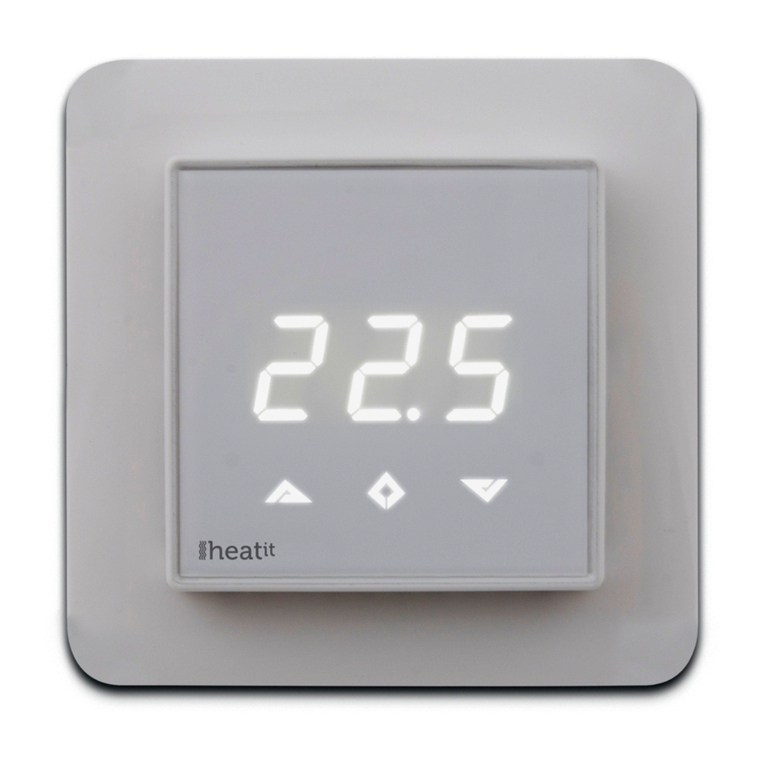
Heatit
Heatit Z-TRM3 User manual
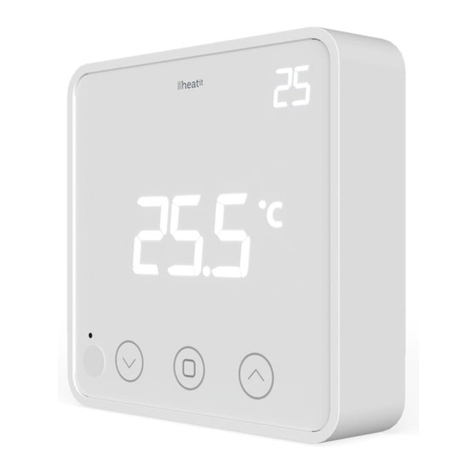
Heatit
Heatit Z-TEMP2 User manual
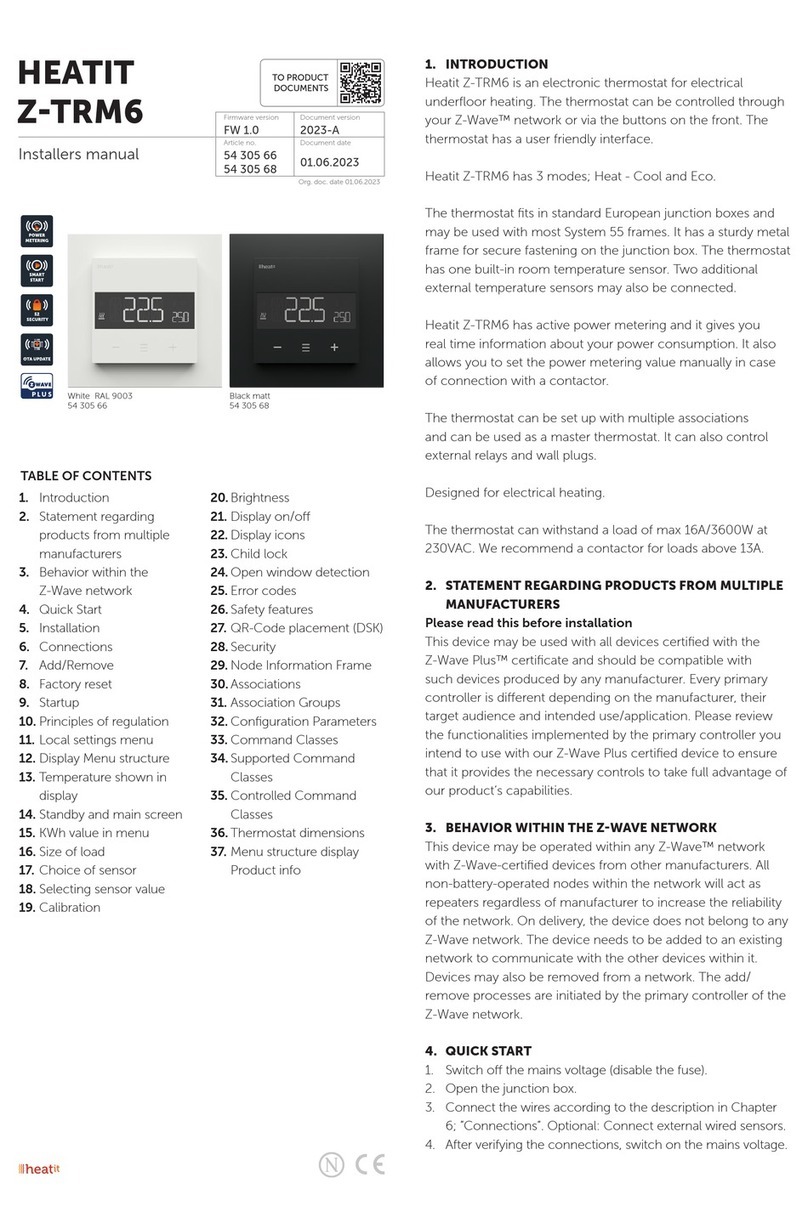
Heatit
Heatit Z-TRM6 User guide

Heatit
Heatit Z-TEMP2 User guide

Heatit
Heatit Z-TRM3 User guide
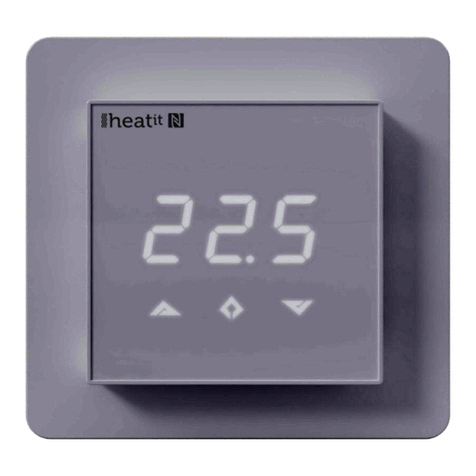
Heatit
Heatit 7S NFC User guide

Heatit
Heatit Z-TRM3 User manual
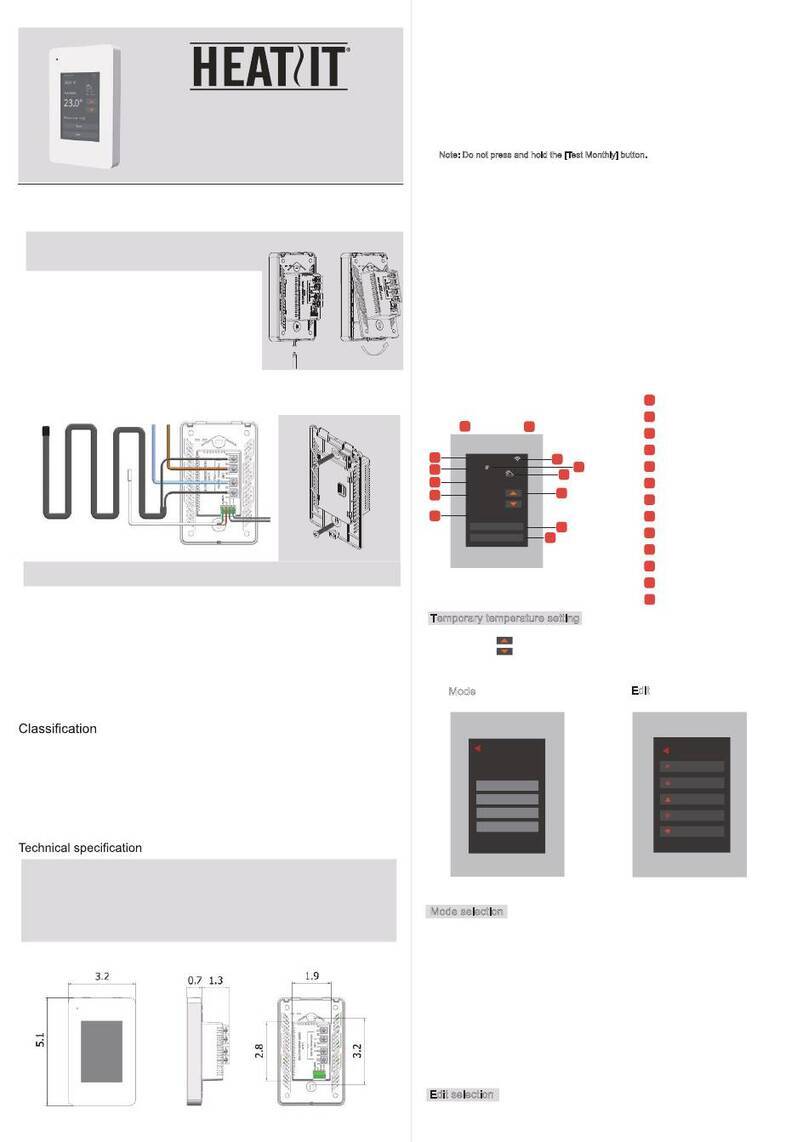
Heatit
Heatit ET-7AW User manual
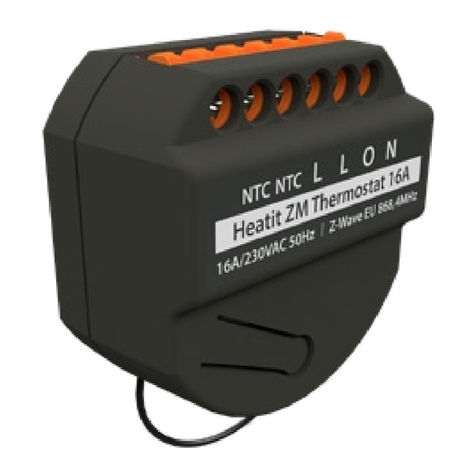
Heatit
Heatit ZM 16A User guide
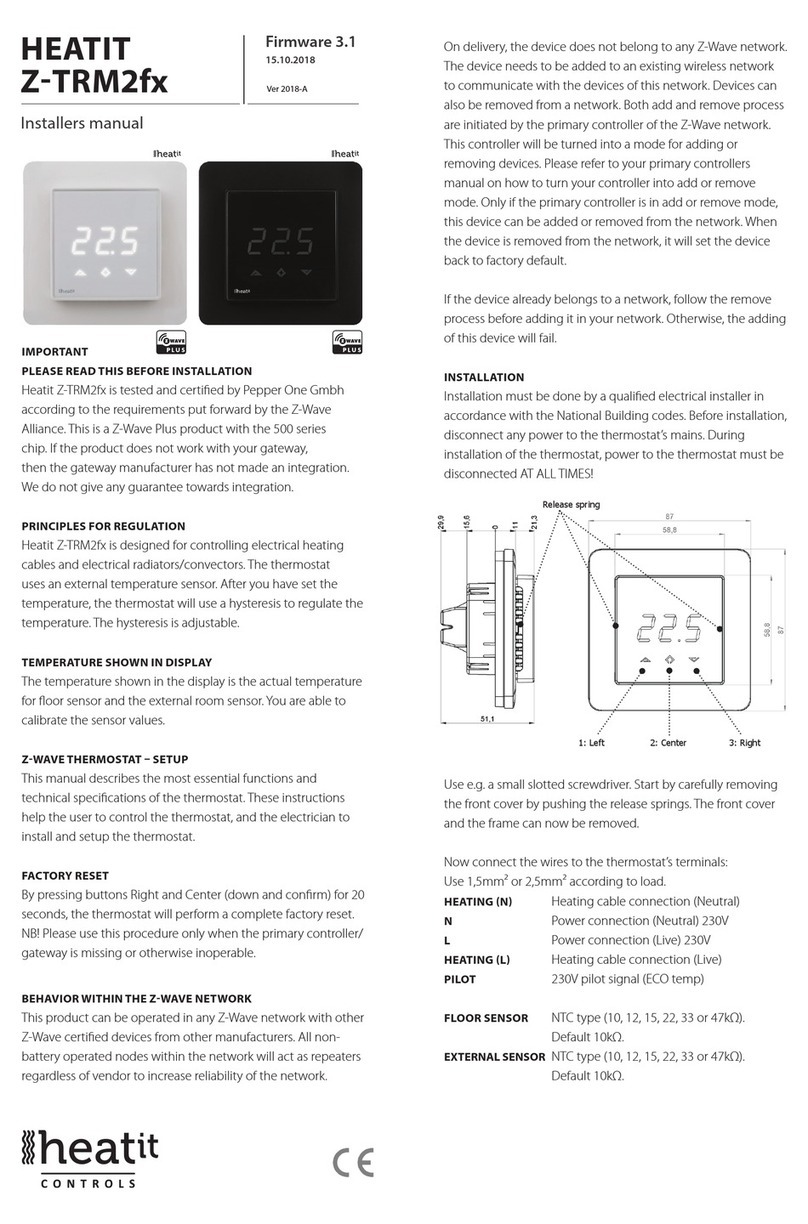
Heatit
Heatit Z-TRM2fx User guide



